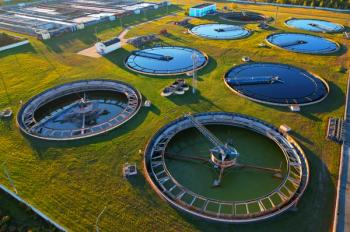
Gas Chromatography Applications
These Wednesday morning and afternoon sessions in Exhibit Hall A4 highlight the advanced applications of Gas Chromatography.
These Wednesday morning and afternoon sessions in Exhibit Hall A4 highlight the advanced applications of Gas Chromatography.
At 10:30 am the session begins with “Turning up the heat on WAX GC columns without getting burned,” presented by Vanessa Abercrombie and Daron Decker of Agilent Technologies. WAX columns consisting of 100 % polyethylene glycol (PEG) are general purpose columns for multiple GC applications. Traditional WAX columns are restricted to a maximum temperature of 250 °C isothermal and 260 °C programmed due to the thermal properties of PEG. By using a special process, the Agilent J&W DB-HeavyWAX column exhibits an extended temperature limit, up to 280 °C isothermal and 290 °C programmed, with improved overall thermal stability properties. The use of the higher temperature column generally provides faster analysis times with reduced sample carryover.
At 1:30 pm the session continues with “Olefin Class Characterization in Gasoline-Range Samples Using Gas Chromatography - Vacuum Ultraviolet Spectroscopy,” presented by Alex Hodgson, and Jack Cochran of VUV Analytics. Olefins are problematic for refinery processing. As one example, conjugated dienes will polymerize in fluid catalytic cracking gasolines, which will cause plugging issues in downstream processing. Both mass spectrometry (MS) and traditional gas chromatography (GC) with flame ionization detection (FID) methods are not suitable for differentiation and identification of olefins during routine analysis. The application of vacuum ultraviolet spectroscopy (VUV) combined with GC allows for rapid deconvolution and quantitation of olefins, specifically conjugated dienes, in complex fuel samples.
At 2:00 PM the final session presentation is “Estimating Particulate Matter Index for Gasoline with Fast Gas Chromatography – Vacuum Ultraviolet (VUV) Spectroscopy,” presented by Jack Cochran, Sean Jameson, Dan Wispinski, and James Diekmann of VUV Analytics.
Gas chromatography with flame ionization detection (GC-FID) is often used for detailed hydrocarbon analysis (DHA). The DHA analysis is used to estimate the Particulate Matter Index (PMI) of fuels as an estimate of the particle number emissions in automobiles utilizing that fuel. The traditional GC-FID method is arduous and time consuming. A new and faster proposed method using vacuum ultraviolet (VUV) spectroscopy (modified from ASTM D8071) is reported to rapidly estimate PMI even in the presence of interferents.
Newsletter
Join the global community of analytical scientists who trust LCGC for insights on the latest techniques, trends, and expert solutions in chromatography.





